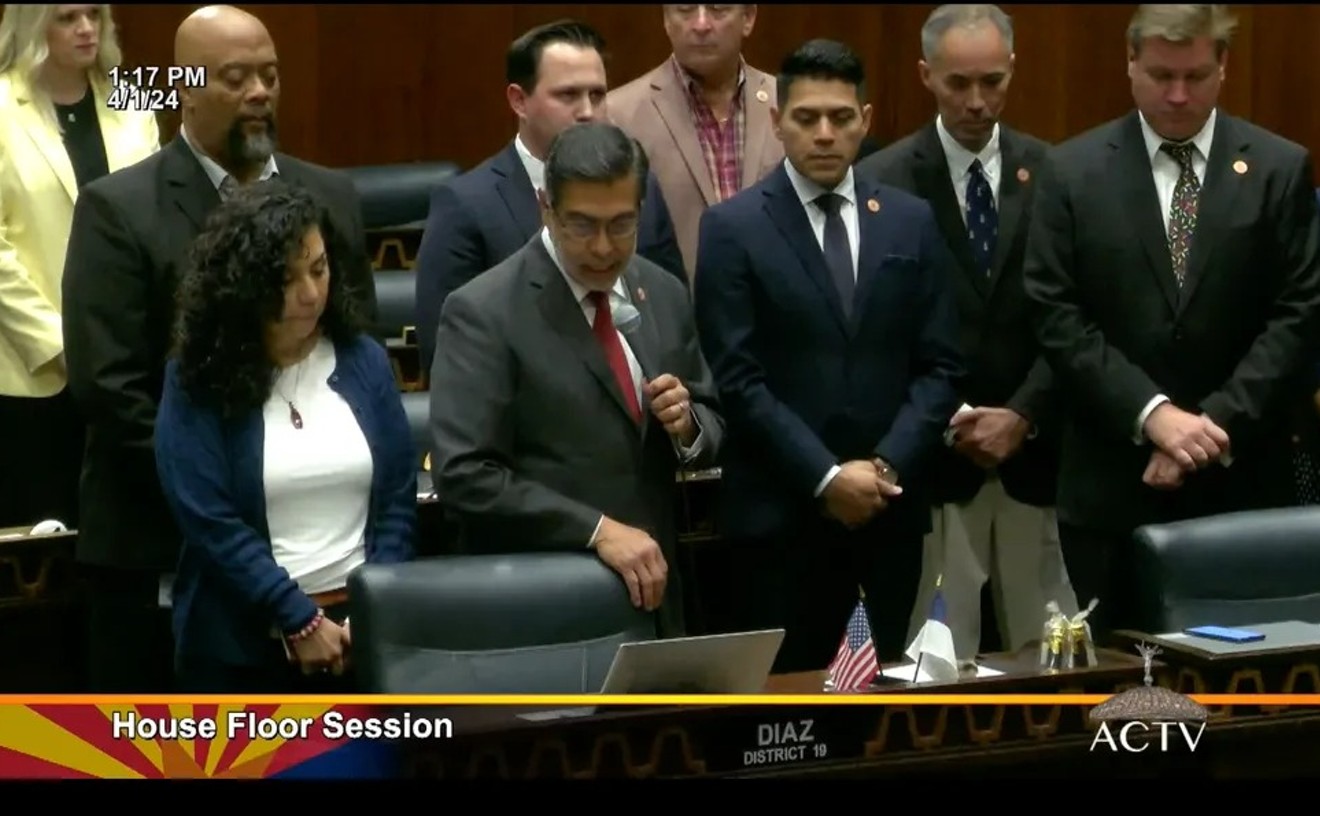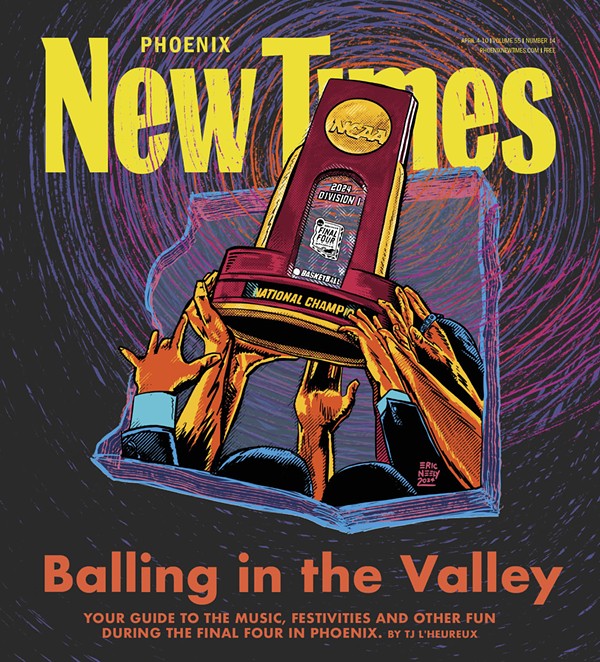According to legend, "the more saguaro wine you would consume, the more the earth would get saturated with rain," says Joseph Enos, a member of the Tohono O'odham nation and Valley resident. The Tohono O'odham--also known as the Papago--live on about three million acres of reservation land in southwestern Arizona.
The ancient Tohono O'odham people crafted animal traps, roofing materials and tools from the ribs of the saguaro (or hasan, as the Tohono O'odham call it). They fueled fires with its ribs and tied its spines together to make tattooing instruments. From the saguaro, they created vessels, dishes, tobacco pouches and dice.
But above all, the Tohono O'odham value the saguaro for its supposed ability to bring rain with the consumption--and subsequent regurgitation--of the wine made from its fruit. That ability and the Tohono O'odham belief that the saguaro is actually a human being are tied to a legend, translated by the late anthropologist Ruth Underhill (reprinted by Gary Nabhan in his 1982 book The Desert Smells Like Rain):
"A baby was deserted by his mother who . . . never nursed her child. The infant, after following her in vain, finally sank into the earth and came up on a mountain slope as a giant cactus. The people searched for it and finally the Crow found it. The Crow flew to its summit; it nibbled the fruit and vomited the red pulp into a basket. The people then put this pulp into a jar and said to it: 'You know what to do.' The pulp began to ferment, singing: 'Here I stand/The wind is coming toward me/Shaking. Here I stand/A cloud is coming toward me/Shaking.'"
From that day, the Tohono O'odham people have held wine feasts each summer. At the beginning of July, the fruit of the saguaro is harvested; its syrup is fermented in clay pots. Late in the month, "sit and drink" ceremonies are held: People sing, dance, recite traditional speeches--and consume saguaro wine until they vomit.
Then it rains. In his book, Nabhan recalls his personal experiences as a white man attending a wine feast. The wine, prepared by tribal medicine men, was blessed and served to the participants. They sat in a circle, beneath the beating 115-degree Sonoran desert sun; their tears flowed as they got drunker and drunker. "The wine was everywhere: on our breaths, splashed into our clothes, and in the air," Nabhan writes.
"Then I started to notice that the men would stagger off from the center of the circle, some to pee, but most of them to throw up. They would walk 20 steps or so out from the group, open their mouths to the ground, and out would splash a wave of cream-colored foam. They would turn around and come back into a circle to sing, froth still left on their lips."
He continues: "They vomited in the open, without any hesitancy, and were taken back into the embrace of the other singers just as openly."
Nabhan fails to mention the state of his own stomach that day, and when contacted by New Times, he declined to comment on his book or share any additional observations. Explaining the Tohono O'odham wine-feast ritual to an outsider is impossible, Nabhan says--sort of like explaining Communion to someone who has never seen the inside of a church.
The Tohono O'odham people don't like to discuss the wine-feast ritual because, they say, it is often misinterpreted as just another wild party. "Everything we do down here is tied to our culture and our religious beliefs," says Joe Jauquin, cultural preservation officer for the Tohono O'odham Nation. The wine feast "is not just something you go out there to have a good time with. It's a significant part of our livelihood."
But tradition is fading, Jauquin and Enos admit, and these days the wine feasts often do degenerate into drunken brawls. "There's some violence and some fights," Enos says. "And a lot of Budweiser and Coors. Not everyone follows tradition exactly anymore."
Jauquin sighs. "In the old days, it was just straight, fermented cactus wine, and you drank and that was it."
And then there's the vomit question. Jauquin recalls the rituals of the wine feast in somber tones, but chuckles when asked about the significance of the act of vomiting. He insists that vomiting has nothing to do with the wine feast, that people only get sick if the wine is not prepared correctly.
Donald Bahr, an Arizona State University anthropology professor who has consumed gallons of saguaro wine and thrown up dozens of times--all in the name of academia--agrees that the feasts aren't what they used to be. Only the oldest members of the nation follow the traditions; the rest are there to party. It's rather depressing, Bahr says, "like [watching] old people playing checkers in the park."
Bahr says he understands why members of the Tohono O'odham community wouldn't want to discuss the vomiting aspect of the ritual. "It's completely the opposite of white ideas about holding your liquor," he says. "It runs counter to white ideas of propriety." Vomit or no vomit, Jauquin reminds skeptics that the wine feast still brings the desired effect--rain. Nabhan saw it himself and wrote: "Looking down at the muddy puddles of vomit and spilled saguaro wine in the dirt, I noticed raindrops scattering, hitting the powdery dust. Looking up, I saw the shadow of a lone cloud dimming the feast camp for a few minutes, scattering a drizzle over us. One old Indian cowboy pulled his hat brim down, and prodded his boot heel into the soil as he spoke. 'Every time I been here to sit and drink that wine, there comes a little rain. Sure feels good to get wet again.'











